
Richard Hutten for Christofle
Dutch designer Richard Hutten has designed a collection for French luxury brand Christofle.
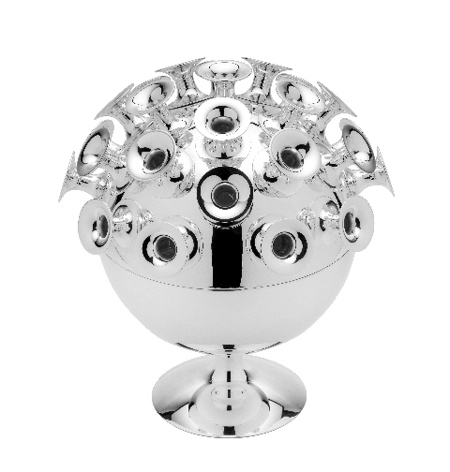
The collection, called Atomes d'Argent, consists of silver vases, bowls and candelabra made of clusters of silver spheres.
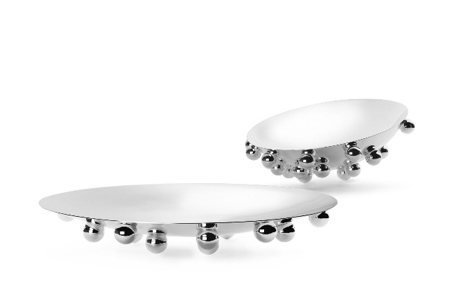
Below is an interview with Hutten about the collection and provided by Hutten's office:
--
Is this the first time that a renowned luxury brand has called on your services?
It’s not the first time I have been contacted, but it is the first time I have collaborated with a luxury brand.
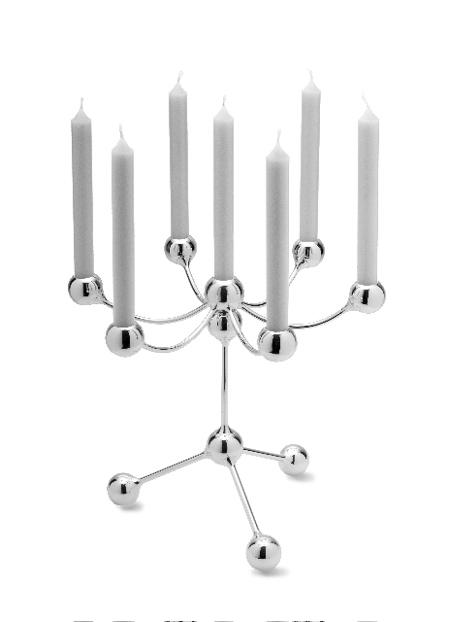
What is your design approach? Is it different when you are working with a luxury brand like Christofle?
The context always guides my approach. Of course, the brand context – in this case the luxury brand Christofle – demands its own specific response to the request. For most of the commissions I receive, the name of the designer is important to the client, mainly as a marketing tool. In the case of Christofle, the brand is the most important thing, and the name of the designer is secondary.
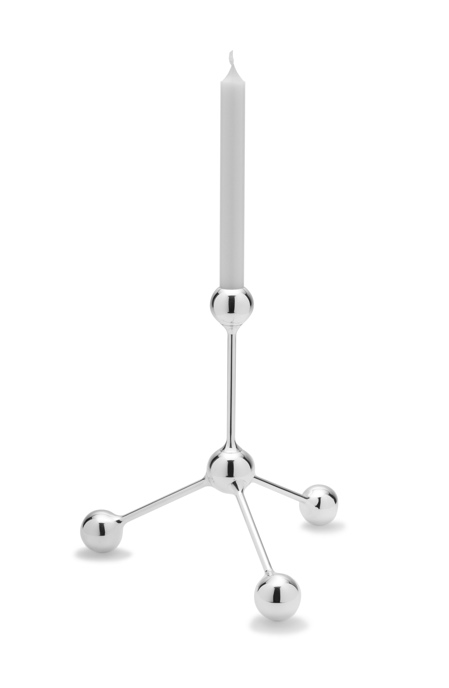
What do you think of the Christofle brand and its history, know-how and collections?
Christofle’s history and know-how are unique and precious. Its collections are more than just groups of products; they also represent the periods during which they were made. Working for you makes me part of this whole, which is something very special for me.
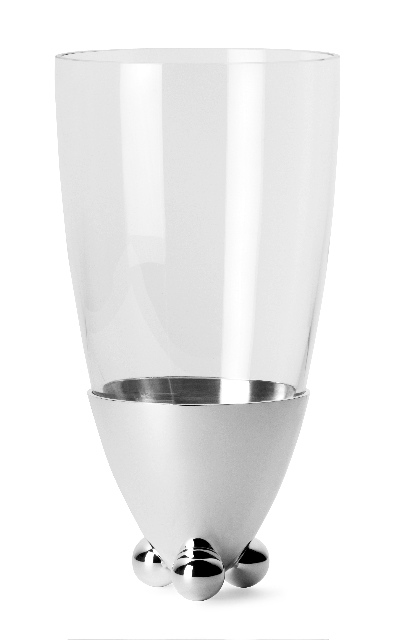
Did you know the brand before working with it?
Yes, mainly from its flatware.
What was the origin of this collection for Christofle?
I spent a full day in Christofle’s archives. My collection is rooted in the company’s long history. I came up with a contemporary interpretation based on this strong tradition. I tried to reinterpret the history of Christofle. Times have changed over the past two centuries, and it is a great honor to be part of this long tradition and at the same time, reshape it. I hope (and am convinced) that my small contribution to the company will help keep this tradition alive.

Why did you choose to work on a sphere? What were your sources of inspiration?
As I mentioned before, I spent a full day in your archives. I looked at many catalogues from the past. The sphere is a common form in the old collections. I was especially drawn to the image of the 19th-century “Lampe à cigares, boule fond uni’. There is a direct link between this object and my designs. This was the inspiration for the whole collection of spherical forms.
What were the main design options for the collection?
I chose very basic forms, putting myself in the background as a designer since I cannot claim to have invented the universal shape of a sphere. At the same time, I think the sphere is the best form for silver. In my opinion, the reflections on round surfaces are the most beautiful - much more beautiful than they are on flat objects. That’s why I chose round forms, to emphasize the quality of the silver.
Are you used to working with silver?
This was the first time for me, except for some rings I once made for an Icelandic company. I was attracted to it for a number of reasons, including the techniques it involves, which provided a starting point, and its obvious luxury, which guided my inspiration. The flower-holder vase has a surprising, highly original shape.
How would you describe it?
A moon with craters. An explosion. But above all, I hoped that people looking at or using it would have their own interpretations or associations.
How would you define a decorative object?
Decorative objects don’t exist. If you put an object, any object, in an empty space, the object becomes decoration. Any object that is more than just functional has a decorative aspect to it. In the case of “Atomes d’argent", I tried to emphasize the richness and beauty of the material and the brand. The decoration of the objects in the collection is mainly provided by the reflections in the silver, while the form itself is smooth and pure.